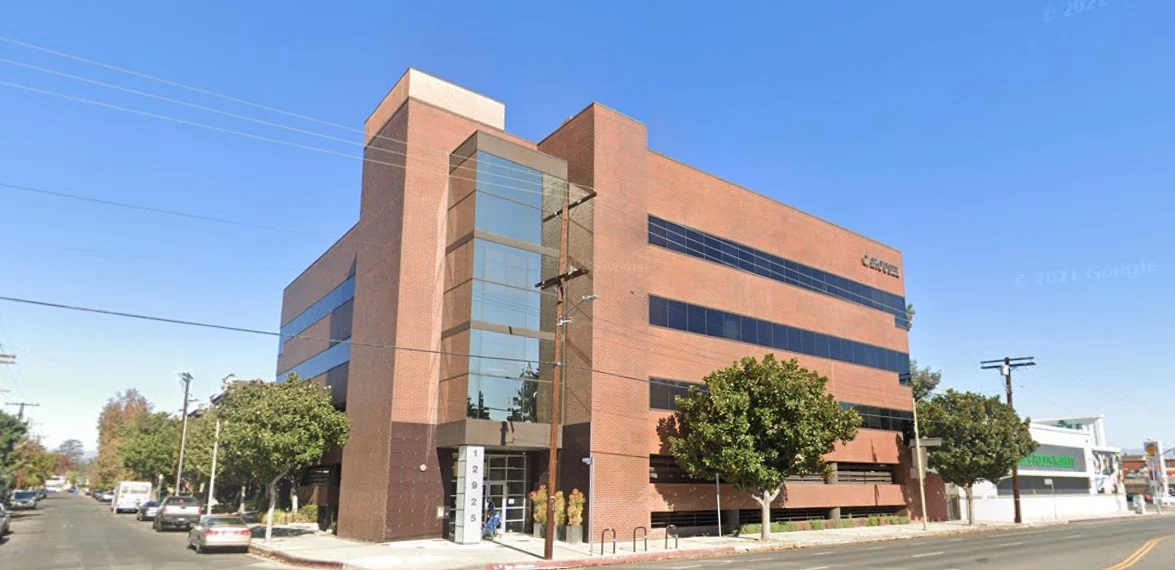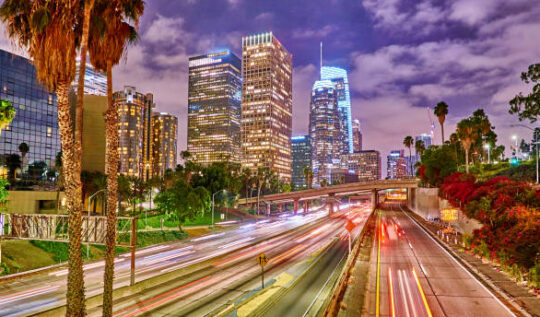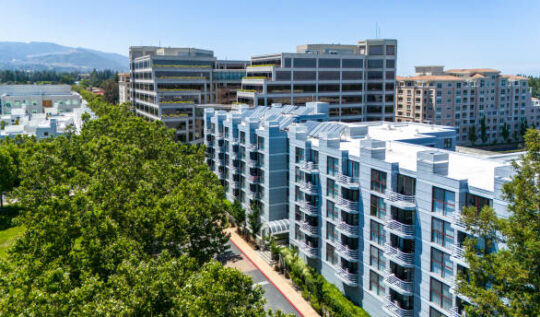California Local Permit Triggers in 2025 – Expert Guide by JDJ Consulting Group’s CEO
If you plan to build, renovate, or redevelop property in California, you need to understand California local permit triggers. These are actions—like expanding a building or changing site access—that require approval from your city or county.
Table of Contents
ToggleIn 2025, state laws and local rules are shifting. That means some projects that didn’t need permits before may now trigger full review. Others may move faster thanks to new deadlines and streamlined processes.
At JDJ Consulting Group, we work with landowners, builders, and real estate professionals across California. Our job is to spot permitting issues early and help projects move smoothly through the system.
This guide explains what counts as a permit trigger in 2025, why it matters, and how to plan ahead. We’ll also share tools and tips to avoid delays, save money, and meet local rules from day one.
California Local Permit Process – Step-by-Step (2025)
(Define Scope)
& Land Use
(CEQA / Exemptions)
Review
Submission
(Edits / Resubmittals)
This flow illustrates a typical local permitting journey in California cities. Depending on your city or county, steps may vary slightly—but this framework covers most common triggers and requirements.
What Is a Permit Trigger—and What’s Changed in 2025?
A permit trigger is anything that requires local approval before work can begin. This includes new construction, but also smaller changes—like adding parking, moving a utility line, or cutting into a sidewalk.
In 2025, new California laws and city updates are raising the stakes. Even routine upgrades may now trigger extra steps like:
Public hearings
Stormwater or utility permits
For example, if you add more than 50% to an existing structure, you may need a full site plan check—even if the original building was approved years ago. If you split a lot into two homes, your city may require a traffic study or CEQA review.
Understanding these triggers early helps you avoid surprises, delays, and unnecessary fees.
Common Permit Triggers California Cities Enforce in 2025
Local rules vary, but most cities and counties use similar thresholds to decide when permits are needed. Here’s a breakdown of the most common local triggers JDJ Consulting sees across California:
Table 1: Permit Triggers That May Delay Your Project in 2025
| Change to Property | Common Local Requirement | How JDJ Helps |
|---|---|---|
| Building expansion over 50% | Site Plan Review or Conditional Use Permit | Pre-check project scope before design |
| Moving or adding utility lines | Public Works and Planning Review | Coordinate utility plans early |
| Adding or altering parking | Traffic Impact or Zoning Review | Adjust layout to avoid thresholds |
| Subdividing land for housing | Parcel Map or CEQA Review | Check if project qualifies for exemptions |
| Demolition or teardown | Demo Permit and Environmental Clearance | Determine if CEQA or historical review applies |
Even small upgrades can activate reviews. For example, Santa Monica requires a full review if you expand a building by more than 500 square feet—even if zoning allows it. Cities may also flag projects that increase runoff, change lot access, or remove trees.
Why Early Planning Makes a Big Difference
The earlier you know what triggers a review, the better you can plan. At JDJ, we do permit trigger assessments before design begins. We check site zoning, overlay zones, and city codes to help clients:
Avoid surprise delays
Limit extra reviews
Choose faster permitting paths
We’ve helped projects cut approval time by 2–4 months by flagging permit triggers early and adjusting designs before submitting.

New 2025 California Laws That Trigger Local Permits
California passed several laws that change how local permits work in 2025. These updates affect timelines, reviews, and what counts as a complete application. If you’re planning a project this year, these new rules could speed things up—or slow you down—depending on how you prepare.
Let’s look at three key laws to watch.
AB 130 – Permit Streamlining Act Updates
Assembly Bill 130 updates the Permit Streamlining Act. This law sets deadlines for cities and counties to act on development applications.
Key changes in 2025:
Agencies must approve or deny complete applications within 60 days (for some housing projects).
If they miss that deadline, the project may be automatically approved.
Applies mostly to residential, mixed-use, and some infill developments.
Why it matters: This law gives developers more power to push projects through if cities delay. But to use this law, you must submit a “complete” application—with all required materials, reports, and studies. JDJ helps clients build a complete package from the start so time limits apply.
AB 253 – Use of Third-Party Reviewers for Faster Permitting
Starting in 2025, cities with slow permitting times must let applicants hire independent third-party reviewers if approvals take too long.
Here’s how it works:
If a city doesn’t act within 30 days, the applicant can hire a licensed planner or architect to review the project.
That review replaces the city’s internal review (for certain permits).
The city must accept the outside reviewer’s findings.
Why this helps:
AB 253 puts pressure on slow cities. It also gives applicants more control. JDJ can help clients pre-qualify third-party reviewers and work with cities that allow this option.
AB 671 – Restaurant and Small Business Permits
For food businesses and storefront buildouts, AB 671 sets clear limits on how long cities can take:
Cities must approve or reject most small business permit applications within 20 business days.
Applicants can self-certify some construction drawings if licensed professionals sign off.
Applies to small restaurants, cafes, and shops.
Why this matters:
If you’re converting a commercial space into a restaurant, this law removes red tape. But self-certification only works if your project fits within local zoning rules. JDJ helps you check those requirements before design.
Table 2: How New Laws Affect Permit Timing in 2025
| New Law | Project Type | Main Impact | JDJ Strategy |
|---|---|---|---|
| AB 130 | Residential / Mixed-Use | City has 60 days to act, or project may auto-approve | Prepare full application packet to trigger deadlines |
| AB 253 | All qualifying projects | Use private reviewers after 30-day delay | Pre-arrange licensed third-party consultants |
| AB 671 | Restaurants / Retail | 20-day city deadline or self-certify | Confirm eligibility for self-certification during design |
How JDJ Applies These Laws for You
Many project delays happen not because of city rules—but because applications are incomplete or poorly documented. That’s where we come in.
At JDJ, we:
Monitor state law updates to see which apply to your project
Prepare permit-ready documents that meet new legal standards
Work with cities to track review deadlines and unlock fast-track options
Want to use one of these new laws? We’ll help you build a strategy around it—before your first submittal.
What Triggers Environmental and Stormwater Permits in California Projects
Not all permit triggers come from buildings or land use changes. Environmental regulations can also require separate approvals — especially if your project impacts water, soil, or protected natural features.
In 2025, California has updated several environmental review rules. These affect developers, builders, and even homeowners planning moderate upgrades.
New Stormwater Permit Rules: Transition Deadline in August 2025
If your project disturbs one or more acres of soil, you need coverage under the Construction General Permit (CGP). The state has updated this permit, and the old version expires on August 31, 2025.
What’s new in the 2022 CGP:
Stronger rules on runoff and site stabilization
New stormwater modeling requirements
Expanded site monitoring responsibilities
Who it affects:
Builders, general contractors, and developers with large lots or grading activity. Many multi-family, industrial, or even large custom homes now fall under this rule.
How JDJ helps:
We connect project teams with qualified QSD/QSP consultants, help complete the Stormwater Pollution Prevention Plan (SWPPP), and ensure you meet all deadlines before the cutoff.
Do You Need a Local Permit for Your 2025 Project?
Check off anything that applies to your project:
Lake and Streambed Alteration (LSA) Permits – More Emergency Flexibility
If your project affects streams, lakes, or wetlands, you may need an LSA agreement with the California Department of Fish & Wildlife. This applies if you:
Replace culverts or storm drains
Modify natural channels
Do grading near riparian habitat
In 2025:
Governor Newsom’s Executive Order N-13-25 temporarily suspends LSA reviews in some fire-affected areas to allow fast rebuilding.
How JDJ helps:
We verify if your property qualifies under the emergency order and help fast-track rebuilding efforts. For other cases, we coordinate with Fish & Wildlife and ensure your project avoids fines or delays.
CEQA Review Triggers
CEQA (California Environmental Quality Act) is a big reason why local reviews can take time. Some projects qualify for exemptions, but others require an Initial Study, Mitigated Negative Declaration, or full EIR.
Triggers for CEQA review include:
Changes in traffic patterns
New structures over a certain size
Impact to historic or biological resources
Projects in sensitive areas (e.g., near wetlands or schools)
In 2025, AB 130 adds time limits to CEQA reviews in some housing cases, but the rules are still complex.
How JDJ helps:
We assess if CEQA applies, identify possible exemptions, and guide clients through early coordination with city planners.
Permit Triggers for Housing, Retail, and Subdivisions in 2025
Different property types face different permit triggers. A housing developer doesn’t follow the same rules as a restaurant owner. Here’s what to expect for 2025 projects in three common categories: residential, commercial, and subdivisions.

Residential Development and ADUs
In California, adding homes is a top priority. Laws continue to support Accessory Dwelling Units (ADUs) and small infill homes, but that doesn’t mean every project is fast-tracked.
Permit triggers for residential include:
Adding an ADU that affects utility capacity
Building on a slope or hillside
Demolishing older homes
Subdividing a single lot into multiple parcels
Even if ADUs are allowed by right, cities can deny or delay permits if you don’t follow specific design, parking, and utility rules.
JDJ Tip: We help clients confirm eligibility under state ADU laws and guide them through ministerial vs discretionary reviews.
Subdivisions and Lot Splits
Under laws like SB 9 and SB 684, you can now split some lots into two or more parcels without going through a full map process. But not every parcel qualifies.
Triggers for review include:
Parcels near fire zones or protected habitats
Lack of street access or infrastructure
Requests for exceptions to local development standards
JDJ Tip: We offer lot feasibility assessments, check overlay zones, and prepare required maps and notices to avoid delays.
Commercial Projects and Tenant Buildouts
Opening a new restaurant, gym, or shop? Many commercial tenant improvements trigger permits, especially when you change the building’s use.
Triggers include:
Converting a retail space to a food use
Adding commercial kitchens or grease interceptors
Changing parking requirements
Installing new signage or patios
2025 shortcut: Thanks to AB 671, some restaurants can self-certify plans and get faster approvals.
JDJ Tip: We help business owners confirm their use is allowed, calculate parking correctly, and avoid unnecessary plan checks.
How JDJ Helps You Go Through Permit Triggers Smoothly Before They Become Roadblocks
At JDJ Consulting Group, our mission is simple: make permitting smoother, faster, and more predictable for our clients. Whether you’re building housing, opening a business, or managing a redevelopment project, we know how frustrating unexpected permit delays can be.
That’s why we use a strategic approach built around proactive planning, deep knowledge of California law, and strong relationships with local agencies.
We Identify Permit Triggers Early in the Process
Before you invest in design, engineering, or construction, we take time to assess your site. Our team reviews:
Local zoning codes and overlays
Environmental constraints
Utility connection points
Access, grading, and infrastructure
Building size and density thresholds
We use this review to create a Permit Trigger Map that shows what approvals your project will likely need — and what can be avoided with smart design choices.
We Help You Choose the Right Path: Ministerial vs Discretionary
Some projects qualify for “by-right” approval, meaning cities must approve them if they meet the rules. Others are discretionary and require public hearings or extra studies.
We break down your options and recommend the fastest, most reliable route. This can mean:
Using state density bonus laws to skip parking reviews
Designing within ADU standards to avoid discretionary hearings
Splitting a lot under SB 9 with minimal conditions
Leveraging AB 130 or AB 253 to lock in city timelines
Our job is to save you time, cost, and risk—all while staying compliant with California’s fast-changing permit landscape.
We Coordinate the Entire Review Process
Once the plan is ready, we handle the submission process and work directly with city staff, plan checkers, and outside reviewers (if allowed under AB 253).
Here’s what we do:
Submit a complete, well-documented application
Track deadlines using Permit Streamlining Act rules
Coordinate CEQA, environmental, and stormwater filings
Respond quickly to plan check comments
Negotiate conditions of approval, if needed
We also keep our clients updated every step of the way with simple reports, milestone tracking, and next steps.
Table 3: How JDJ Solves Common Permit Trigger Problems
| Permit Issue | Common Consequence | JDJ’s Solution |
|---|---|---|
| Site triggers CEQA review | Adds 6–12 months | Identify possible exemptions, coordinate early with planners |
| City delays approval for weeks | Missed project deadlines | Use AB 130/253 to enforce timelines or add third-party reviewer |
| Utility relocation flagged late | Redesign and resubmittal | Coordinate public works input before submission |
| Historic or overlay zone conflicts | Project redesign or denial | Verify zone status, adjust design to comply |
| Zoning interpretation unclear | Conflicting city responses | Submit zoning verification letter before permit filing |
We Plan Ahead for Inspections and Compliance
Permits don’t stop at approval. JDJ also advises on final inspections and post-permit steps, including:
Scheduling and coordinating inspections
Responding to corrections or site changes
Handling Certificate of Occupancy or Final Clearance
Filing permit close-out documents
This end-to-end process keeps your project moving and ensures you’re covered from first drawing to final inspection.
Average Permit Approval Timelines by Major California Cities (2025)
Timeline estimates vary based on project size and complexity. JDJ Consulting helps reduce these wait times by preparing complete and compliant applications.
Case Study: How We Helped a Santa Monica Property Owner Avoid a Costly Site Plan Review
The Situation
A property owner in Santa Monica contacted JDJ Consulting Group in early 2025. She wanted to expand her single-story commercial building by 600 square feet to accommodate a new wellness clinic.
It seemed like a small addition, but in Santa Monica, any expansion over 500 square feet triggers a full Site Plan Review. That process can take 3–6 months, involves multiple city departments, and might require a traffic study.
She didn’t have that kind of time — or budget.
Our Approach
We immediately conducted a Permit Trigger Assessment. After reviewing the local zoning code, we confirmed that her planned expansion would indeed activate a discretionary review process.
Rather than submit the original design and risk delays, we proposed a strategy:
Split the expansion into two smaller phases: Phase 1 would add 450 square feet (under the 500-sq-ft trigger), and Phase 2 could be permitted later under a separate review, once the business opened.
Use ministerial review (non-discretionary) for Phase 1 to get approved in weeks, not months.
Redesign interior layout to accommodate key clinic functions within the first expansion.
The Outcome
Thanks to this approach:
Phase 1 received approval in just 4 weeks under standard building permits
No site plan review or traffic study was required
The client opened her clinic 3 months ahead of schedule
She saved an estimated $18,000 in consultant and delay-related costs
Once Phase 1 was fully operational, we helped her prepare for Phase 2 with a much stronger business case — and a track record of safe operation in the community.

What This Means for You
Even small additions can cause big permitting headaches — unless you catch the triggers early. With JDJ on your team, you don’t have to worry about being caught off guard.
We help clients:
Spot issues before plans are submitted
Choose the smartest strategy for approval
Stay compliant while avoiding costly delays
Adapt to evolving laws and local rules
Every city is different. That’s why JDJ focuses on site-specific planning for each project we take on — whether it’s a 600-sq-ft clinic or a multi-acre development.
To Sum Up!
If you’re planning a project in California in 2025, knowing what triggers a local permit is more important than ever. What might seem like a small site change — like adding a driveway, moving soil, or building an ADU — can suddenly require multiple reviews, reports, or even public hearings. It’s easy to feel overwhelmed.
But you don’t have to figure it out on your own. At JDJ Consulting Group, we help simplify this process. We know the language cities speak and what planners expect. Whether you’re just starting out or stuck mid-way through permitting, we’re here to walk you through it — step by step.
Feeling unsure if your project needs permits in 2025?
Let us help you get clear answers — and fast-track your approval process.
We’ll review your project and help you understand exactly what’s needed — no guesswork, no surprises.
Or just give us a call at (818) 233-0750. Likewise, feel free to send us an email about your project details: sales@staging.jdj-consulting.com
We’re always happy to chat.
🚧 Avoid Permit Delays in 2025 — Let JDJ Consulting Help
Whether you're building a new home, adding an ADU, or launching a commercial project, permit triggers are evolving fast in California.
- Get expert help navigating CEQA, zoning laws, and agency reviews
- Save time and money with proper documentation and strategies
- Avoid rejections and project hold-ups
FAQs Regarding California Local Permit Triggers 2025
What is a permit trigger in California development?
A permit trigger is any project action that requires review or approval from a city or county. In California, this includes a wide range of activities—even small ones.
Common permit triggers:
Building or expanding structures
Grading or excavating land
Changing the land use or zoning
Adding new utility connections
Modifying parking layouts
What types of projects most often trigger permits in 2025?
In 2025, projects that change the layout, use, or intensity of a site are more likely to require permits. Local governments are enforcing rules more strictly.
Examples of high-risk projects:
Building additions over 500 square feet
Changing from residential to commercial use
Subdividing lots or creating new parcels
Projects in overlay or historic zones
What does AB 130 change about permitting timelines in 2025?
AB 130 speeds up the permit approval process by giving cities strict deadlines. If your project qualifies and your application is complete, cities must act fast.
What AB 130 includes:
60-day deadline for permit decisions
Applies to many housing and mixed-use projects
Cities that miss the deadline may lose authority to deny
Encourages cities to streamline internal reviews
What is AB 253 and how does it help speed up approvals?
AB 253 gives applicants more control if cities delay permits. It allows you to bring in certified third-party reviewers when agencies are slow to respond.
Key benefits of AB 253:
Use licensed professionals to review plans
Applies after 30 days of city inaction
Ensures fair and timely reviews
Especially helpful for infill and housing projects
Can I avoid CEQA for my small project?
Yes, some small projects are CEQA-exempt, but others still require review. It depends on how much the project affects the environment.
You might qualify for an exemption if:
Your project is ministerial (by-right)
It’s in a dense, urban area
It’s an ADU or small residential lot split
It doesn’t impact traffic, noise, or sensitive areas
How do utility upgrades trigger permit requirements?
Upgrading or adding utility services often requires separate permits and agency approval. These changes can also trigger a broader review.
Utility-related permit triggers:
New water or sewer hookups
Adding or moving electrical panels
Installing EV charging stations
Connecting an ADU to services
Do parking lot changes need permits?
Yes, even minor changes can activate permits, especially if the layout, number of spaces, or access points change.
Triggers include:
Increasing or removing parking spaces
Changing the driveways or flow
Adding lighting or landscaping
Updating for ADA accessibility
What permits are needed when subdividing property?
Subdividing a lot requires multiple permits and often includes public hearings, mapping reviews, and environmental clearance.
You may need:
A Tentative Parcel or Tract Map
Zoning or land use adjustments
Infrastructure or utility plans
Public works and environmental review
Are ADUs still triggering local permits in 2025?
Yes, but fewer than before. California law encourages ADUs, so many are processed faster. Still, some local permit triggers remain.
Permit triggers for ADUs may include:
Exceeding height or setback limits
Building in coastal or hillside zones
Upgrading utilities or driveways
Adding second-story or detached units
What triggers a discretionary vs ministerial permit?
Ministerial permits follow fixed rules with fast approvals. Discretionary permits need public input and more review time.
Discretionary triggers often include:
Zoning variances
Large expansions
Environmental concerns
Public or community interest
Can you build without a permit if it’s a small change?
Rarely. Even small projects like fences, decks, or sheds often require local approval depending on size, location, and zoning.
Always check permits for:
Sheds or structures over 120 sq ft
Retaining walls or grade changes
Roofing or electrical upgrades
Work in easements or utility paths
How can JDJ Consulting Group help you with permit triggers?
JDJ Consulting helps you understand and plan for all possible permit triggers—before they slow down your project.
We provide:
Permit feasibility reviews
Code and zoning analysis
Coordination with local agencies
Strategic planning to avoid delays
What is a WDID number in California, and why does it matter for development permits?
A WDID (Waste Discharge Identification) number is issued by the California State Water Resources Control Board. It’s required when your project disturbs 1 acre or more of soil. This is a common permit trigger in site development and grading.
You’ll need a WDID number if:
Your construction site disturbs 1+ acre
You’re part of a larger phased development
Your city requires stormwater runoff compliance (SWPPP)
Tip: Projects without a valid WDID number can be delayed or stopped by local agencies.
Who needs a CA number in California related to construction projects?
A CA number is issued by the California Highway Patrol (CHP) and is required if you use commercial vehicles for your construction or land development business. It applies to contractors who move heavy equipment or building materials.
You likely need a CA number if:
You operate commercial trucks over 10,000 lbs GVWR
You haul materials between job sites
You transport heavy tools, trailers, or equipment
Without a CA number: You may face delays in inspection or be penalized during site reviews or city checks.
Is a CA number the same as a Motor Carrier Permit (MCP)?
Not exactly. Both are needed if you operate commercial vehicles, but they serve different purposes. Together, they ensure you’re legally authorized to haul construction materials in California.
Key difference:
CA Number: Safety ID issued by the CHP
MCP: Operating license issued by the DMV
You’ll usually need both if:
You’re a general contractor or developer
Your team moves equipment, gravel, lumber, etc.
Can I get a CA number without a DOT number?
Yes, if you operate only within California (intrastate), you can get a CA number without needing a federal DOT number. But if your project team crosses state lines, you’ll need both.
You don’t need a DOT number if:
All operations are within California
Your vehicle is used locally for development sites
You don’t carry interstate freight or work outside CA
Important: Cities or counties may still ask for proof of CA number during permitting, especially if heavy equipment is involved.
What is proof of registration in California for contractors and developers?
In a construction or land use context, proof of registration can refer to:
Contractor License registration with the CSLB
Motor Carrier registration (MCP/CA number)
Site permits or project-specific registrations (e.g., WDID)
Local agencies often ask for proof of these registrations during:
Site plan reviews
Right-of-way permits
Grading or excavation permit approval
Keep these on hand to avoid delays or RFIs from planning departments.






10 Common Permit Delays in Los Angeles and How to Avoid Them
August 18, 2025
[…] complex. What looks simple on paper often requires extra approvals. These added steps are called permit triggers, and they slow down many […]